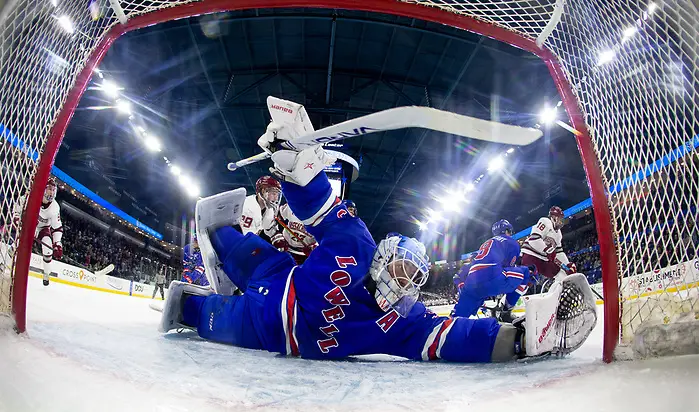
Thanks to the talent of USCHO message board member “Fighting Sioux 23” (we will withhold his actual name to protect his identity), we can present you with results from the multiple tournament games that would have been played on Friday night, based on a computer simulation.
The same simulation was run last weekend with each and every favorite advancing. As gamblers would call it, the results proceeded as “chalk”, indicating a lack of upsets. There were many game 3s played, but in every case the home team advanced.
Based on those results, Fighting Sioux 23 once again ran data (he uses the well-known KRACH data to simulate games, and presents those results on the USCHO Message Board (if you haven’t read this thread, click here.
Despite the favorites moving on last weekend, Friday’s results presented a few upsets.
Atlantic Hockey:
Army West Point 3, American International 1
Sacred Heart 4, RIT 2
ECAC:
Cornell 3, Rensselaer 2
Clarkson 5, Quinnipiac 1
Hockey East:
Maine 3, Boston College 2 (OT)
UMass Lowell 2, UMass 1 (OT)
NCHC:
North Dakota 4, Western Michigan 1
Denver 4, Minnesota Duluth 2
These results would create the following title games on Saturday:
AHA: Army West Point vs. Sacred Heart (winner earns NCAA bid)
B1G: Penn State vs. Michigan (semifinal simulated last weekend)
ECAC: Clarkson vs. Cornell
HEA: Maine vs. UMass Lowell
NCHC: Denver vs. North Dakota
WCHA: Bemidji St. vs. Minnesota St. (semifinals simulated last weekend)
Also, the PairWise, after last weekend and Friday’s simulations would look like this:
1. North Dakota
2. Cornell
3. MSU-Mankato
4. Minnesota-Duluth
5. Denver
6. Boston College
7. Penn State
8. Clarkson
9. Maine
10. Massachusetts
11. Ohio State
12. UMass Lowell
13. Michigan
14. Arizona State
15. Bemidji State
16. Sacred Heart/Army
After Saturday’s simulation, we’ll publish the results and then try to give you our simulation of what the NCAA tournament field would look like based on all of the computer-simulated results.
Please note: This is in no means meant to tell you one team is better than another on the ice. But in the absence of actual games, we hope this simulation might help fill a tiny bit of the void left by losing college hockey.


